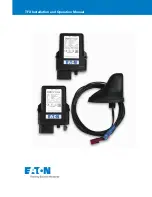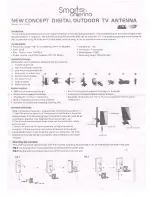
9
GPS overview
tracks a differential correction. The IsoMatch Global GPS antenna uses these corrections to improve its
position to less than 1 meter (3 feet) (
in the appendix).
There are two main aspects of GPS receiver performance:
Positioning
Satellite acquisition quality
When the IsoMatch Global GPS antenna is properly positioned on your vehicle, the satellites transmit
coded information to the antenna in a specific frequency that allows the receiver to calculate a range
to each satellite. GPS is essentially a timing system. The ranges are calculated by timing how long it
takes for the GPS signal to reach the GPS antenna. The GPS receiver uses a complex algorithm incorpo-
rating satellite locations and ranges to each satellite to calculate the geographic location. Reception of
any four or more of these signals allows a GPS receiver to compute 3-dimensional coordinates.
Differential operation
The Radio Technical Commission of Marine services (RTCM) has a differential service intended for cor-
rection services. This includes the Space Based Augmentation Systems (SBAS), such as the Wide Area
Augmentation System (WAAS) and the European Geo-stationary Navigation Overlay System (EGNOS).
The IsoMatch Global GPS antenna is compatible with each of these differential services in addition to
Hemisphere GPS' patented e-Dif.
SBAS
A SBAS enabled IsoMatch Global GPS antenna operates automatically anywhere within the coverage
areas of the WAAS, EGNOS or other SBAS programs.
Summary of Contents for IsoMatch Global
Page 1: ......





































